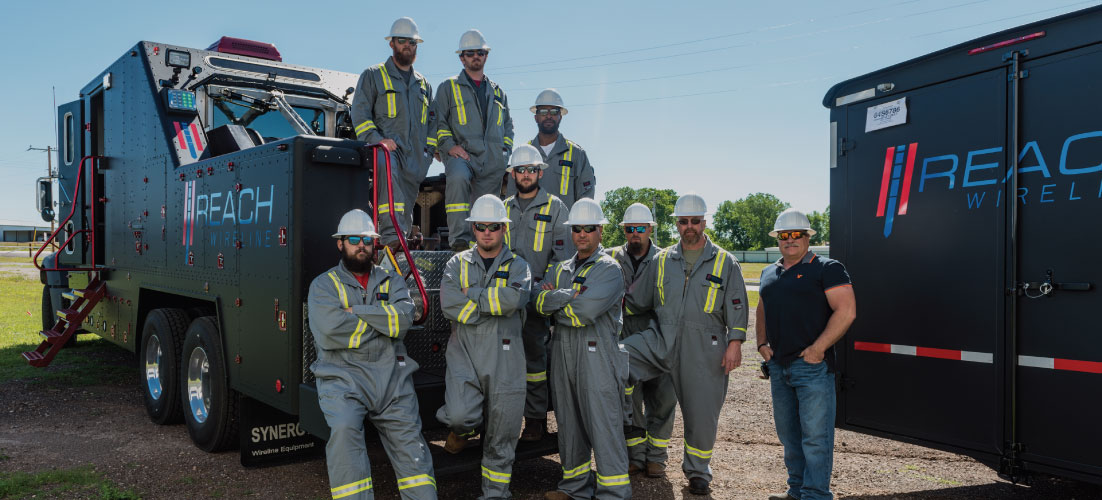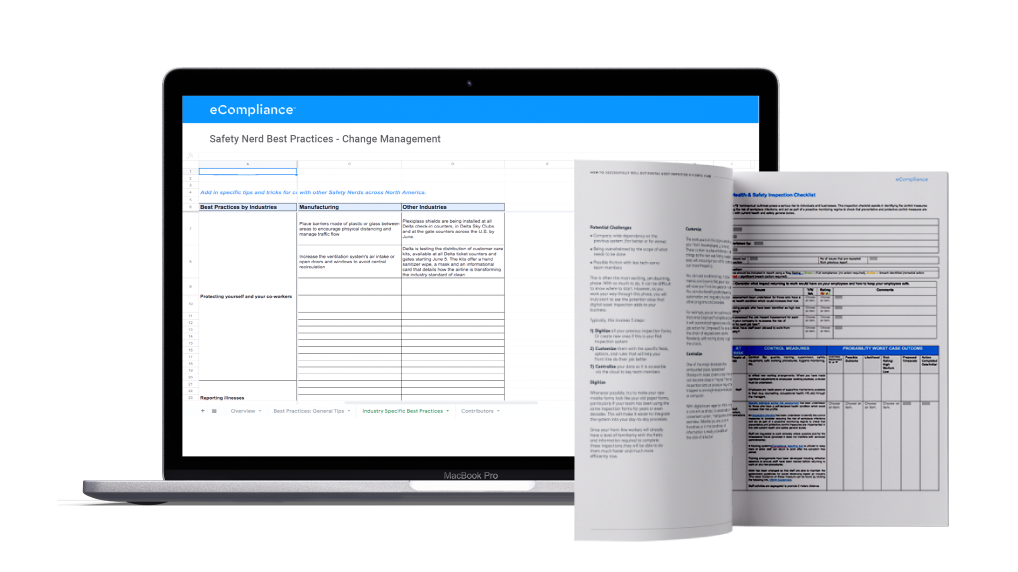
Share this Post
PUBLISHED
July 14, 2020
WRITTEN BY
Raphaela Mandel
Over the last few years, there has been an ongoing trend in EHS technology focused on the advancement of devices on the worksite. More specifically, there has been an increase in the usage of wearable technology and incorporating VR headsets to further engage the front-line workforce.
With COVID-19 affecting how teams operate on-site and managing new safety protocols, this has led many to question what the future of work will look like. So, what is the new approach?
We want to shed light on a customer based out of Fort Worth, Texas, who understands the importance of VR on-site. Meet Reach Wireline. This organization has continued to persevere and has implemented tactics to use this innovative technology on-site to accommodate our now socially distant world.
In this recent article in the Daily Commercial News, John Bleasby stated, ”VR has the ability to simulate realistic 3D project visits without requiring the user to be physically on the site – in fact, the VR visitor can be miles away.” This type of futuristic technology can revolutionize how employees adjust to remodelled safety protocols and interact with assets and fellow teammates. During 2020, where being socially distant has become the new norm, VR will have a chance to shine.
Reach Wireline & Carnegie Mellon’s Quest for EHS Innovation
Enter Reach Wireline. Founded in early 2017, Reach Wireline has grown to have a team of diverse and forward-thinking professionals housing the latest wireline technology. In early 2020, Reach Wireline partnered with Carnegie Mellon’s Entertainment Technology Center in Pittsburgh, Pennsylvania.
A select group of students, who were completing their Master’s Program, were given the task to design a VR system for the Reach Wireline team to help keep employees safe on-site. Reach Wireline had a mission to propel themselves into the future of technology in the oil and gas industry in the United States, and that is exactly what they did.
“At Carnegie Mellon’s Entertainment Technology Center, we’re constantly exploring how the latest technologies can be used to help with education, training, health, civics, and of course, entertainment,” says Drew Davidson, Director of the Entertainment Technology Center, at Carnegie Mellon University. “Collaborating with Reach Wireline on a project around safety training through virtual reality is a great example of this. This helps assist companies like Reach Wireline in looking to the future of technology and how it can improve health and safety. We believe VR can enable realistic training experiences that help better prepare workers for real-world experiences.”
Reach Wireline is the first oil and gas company to partner with a recognized university in the U.S. to create a VR system made specifically for front-line workers.
“The most exciting part about this program is that no one has done this before,” says Zach Vann, the Director of HSE at Reach Wireline. “It’s completely new. Even though there’s a lot of pressure on our team and the students, it’s fun to create something from scratch and explore new realms. The primary goal of this partnership is to ensure employees using this technology will remember their training in a new way and constantly use it in real-life situations to stay safe every day.”
VR in 2020
According to the VR Vision Group, VR in 2020 has started to make major strides. In the manufacturing industry, Ford Motors uses VR to enhance the design of their vehicles. Now they can make real-time adjustments using the virtual representations of cars. There are also dynamic updates within the training and educational aspects of health and safety. The students in the Master’s Program at Carnegie Mellon’s Entertainment Technology Center, had this to say about the project:
Dongmeng Zhang explained the growth possibilities of VR in health and safety stating, “I think VR provides a chance for people to get trained in a real environment without any actual harm. VR will become a powerful platform for training as the technology becomes more mature. It will also become more affordable than training with real equipment as everything is computer-generated and can be re-used.”
Evelyn (Tianheng) Sun also vocalized her goal for the project by sharing, “My goal for this project is to break the limit of physical space for Reach Wireline employees. I want to create a realistic and vast learning environment for them, so they train people safely from a smaller room without the potential of risk on site.”
Challenges with Innovation
While this is an exciting project, Reach Wireline has recognized there will be obstacles because of social distancing. Due to limited time with students, shifts in learning, and how the headsets will be used onsite to prevent contamination with COVID-19, they are charging forward to implement this technology by 2021.
The CEO of Reach Wireline, Chris Payson, is especially passionate about this organization and the revolutionary attitude his team has.
“This is another testament to how Reach Wireline continues to stay on the cusp of technology. This new technology elevates us within our industry as it marks the beginning of a new future of safety training. We can combine real-world experiences without physical dangers, while still showing employees how to effectively mitigate risk. Reach Wireline has always taken safety seriously and I’m happy to be a part of a project our competitors have not explored yet and is brand new to the industry.”
Where To Go From Here…
The partnership between Carnegie Mellon and Reach Wireline is a tribute to the development of technology in high-risk industries. The team at Reach Wireline is committed to staying ahead of the curve to fully develop one of the first (or possibly the first-ever) VR hazard identification/correction health and safety programs.
As their partner in safety, eCompliance is humbled to support Reach Wireline in this journey to safety excellence. They continue to exhibit a true passion for putting their employees first and finding innovative ways to think forward.
As we adjust to a world with a new landscape, the addition of VR will be a challenging yet exhilarating opportunity for many high-risk industries to pivot their training protocols. Reach Wireline, and many of our customers in the safety community, exemplify their ability to adjust to our new normal, strengthen their safety culture, and reduce workplace incidents – one VR headset at a time.

Return to Work Essentials
Keep your front-line safe as you return to the worksite with our
Return to Work Essentials.
